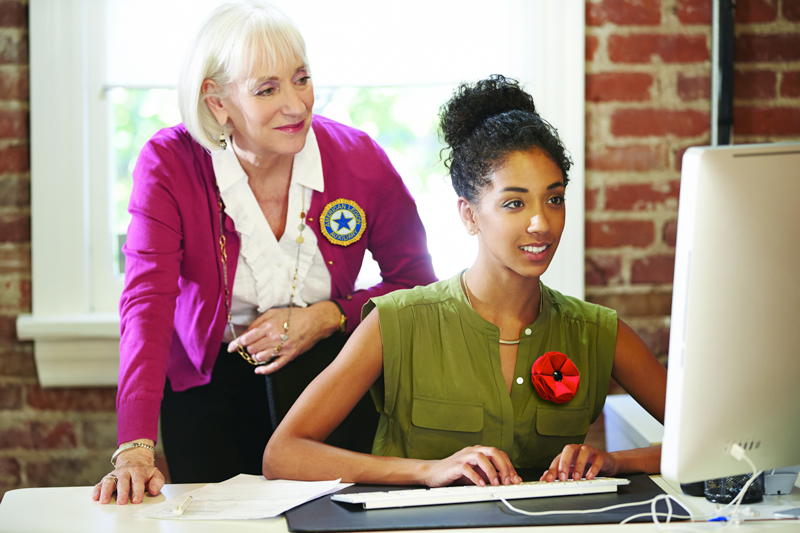
Guest blog by Carrie Davenport, National Public Relations Committee Eastern Division Chairman
Public relations is never an easy aspect of working with a nonprofit organization to define. The Public Relations Society of America defines public relations as “a strategic communication process that builds mutually beneficial relationships between organizations and the public.” This definition is important when trying to truly work the public relations program for the American Legion Auxiliary because we need to be strategic in our communication with the public as we work to strengthen our brand and our place within the community.
Too much or too little public relations will result in less than beneficial relationships with the community that the organization needs in order to succeed. An important part of the American Legion Auxiliary that we celebrate is our work with children and youth and the work of our ALA Junior members, but when working with this very important subgroup, there are many things to consider, especially in regards to public relations.
Things to avoid when incorporating minors into your American Legion Auxiliary public relations plan:
DON’T include photos with minors without first getting parental consent. Just because their mom or dad is in the American Legion Family, does not automatically grant you permission to use their photos, names, or videos when sharing about what you do and why the American Legion Auxiliary is important.
DO get signed parental consent and when possible, get permission from the parents/guardians each time you use the images, videos, or work of a minor. For members of the American Legion Family, it may be as simple as drawing up permission for parents to sign that gives you blanket use. Children cannot give consent to the use of their photographs. Obtaining a child’s consent is not enough to justify putting a child at risk. Parents or guardians must give free and informed permission for the publishing of any such material.
In today’s world of over sharing, using pictures of minors might not seem like a big deal, but we don’t know the minor’s history, family history, or how their name or picture might negatively impact their life.
DON’T take photographs that focus only on one child or are a close up of their face. The use of images of children and minors has become a larger concern in recent years. There is a suggestion that such images may be used inappropriately, or in order to gain access to the children pictured. The issue has been further complicated with the advancement of Internet technology, meaning images and information are much easier to obtain and distribute.
DO use photographs that include many minors in the photograph. Instead of using one child in your advertising and publicity where they are easily identified, try to incorporate others so that it is a group picture where many children are included (all with parental consent of course). This will allow the focus to be on the event and not just a single child. It will also lessen the threats that an adult may use the knowledge gained from the photos to gain unintended access to them through techniques that employ familiarity.
Social media has changed the way in which we publicize our events and as a rule of thumb, it is important to post where you have been and not where you are going to further protect the safety and security of the minors you work with. In 1998, the Children’s Online Privacy Protection Act (COPPA) was put in place to protect personal information of children on websites and online services — including apps — that are directed to children under 13. Generally, this applies to companies or groups that operate either commercial websites or online services directed at children (anyone younger than 13), which would include the American Legion Auxiliary.
COPPA requires those sites and services to notify parents directly and get their approval before they collect, use, or disclose a child’s personal information. Personal information in the world of COPPA includes a child’s name, address, phone number, or email address; their physical whereabouts; photos, videos, and audio recordings of the child; and persistent identifiers, like IP addresses, that can be used to track a child’s activities over time and across different websites and online services. Even though this was originally passed 20 years ago, it is still very relevant when making decisions regarding public relations.
Public relations is a vital program of the American Legion Auxiliary and the youth we work with, both within The American Legion Family and the community. Paying attention to these suggestions will help you maximize your work within public relations, while maintaining a level of safety for the minors that you work with.
This was originally published as an eBulletin.
In the spirit of Service, Not Self, the mission of the American Legion Auxiliary is to support The American Legion and to honor the sacrifice of those who serve by enhancing the lives of our veterans, military, and their families, both at home and abroad. For God and Country, we advocate for veterans, educate our citizens, mentor youth, and promote patriotism, good citizenship, peace and security.